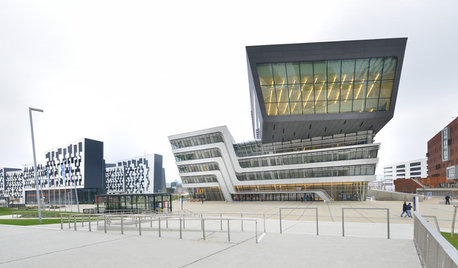Rhodies dying--help!
beej_2007
17 years ago
Related Stories

ARCHITECTURETrailblazing Architect Zaha Hadid Dies at 65
In 2004, Hadid became the first woman to win architecture’s highest honor, the Pritzker Prize
Full Story
PETSHow to Help Your Dog Be a Good Neighbor
Good fences certainly help, but be sure to introduce your pup to the neighbors and check in from time to time
Full Story
LIFEDecluttering — How to Get the Help You Need
Don't worry if you can't shed stuff and organize alone; help is at your disposal
Full Story
ORGANIZINGHelp for Whittling Down the Photo Pile
Consider these 6 points your personal pare-down assistant, making organizing your photo collection easier
Full Story
MOST POPULAR7 Ways to Design Your Kitchen to Help You Lose Weight
In his new book, Slim by Design, eating-behavior expert Brian Wansink shows us how to get our kitchens working better
Full Story
DECLUTTERINGDownsizing Help: How to Edit Your Belongings
Learn what to take and what to toss if you're moving to a smaller home
Full Story
BATHROOM WORKBOOKStandard Fixture Dimensions and Measurements for a Primary Bath
Create a luxe bathroom that functions well with these key measurements and layout tips
Full Story
GREEN DECORATING8 Questions to Help You See Through Green Hype
With the ecofriendly bandwagon picking up some dubious passengers, here's how to tell truly green products and services from the imposters
Full Story
PETS6 Ways to Help Your Dog and Landscape Play Nicely Together
Keep your prized plantings intact and your dog happy too, with this wisdom from an expert gardener and dog guardian
Full Story
MOST POPULAR9 Real Ways You Can Help After a House Fire
Suggestions from someone who lost her home to fire — and experienced the staggering generosity of community
Full Story





luis_pr
livinez
Related Professionals
Norton Shores Landscape Architects & Landscape Designers · Otsego Landscape Architects & Landscape Designers · South Elgin Landscape Architects & Landscape Designers · Middletown Landscape Contractors · Edmond Landscape Contractors · Bridgeport Landscape Contractors · Coram Landscape Contractors · Crystal Landscape Contractors · Doctor Phillips Landscape Contractors · El Segundo Landscape Contractors · Las Vegas Landscape Contractors · Lynwood Landscape Contractors · Rockville Landscape Contractors · Salem Landscape Contractors · The Woodlands Landscape Contractorshappee2bme
luis_pr
happee2bme
luis_pr
happee2bme
joanne1953
rhodyman